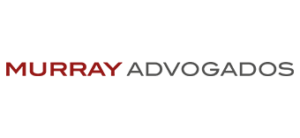Companies show resilience, but high interest rates, weak demand and stronger real took a toll
11/27/2025
Publicly traded companies in Brazil showed operational resilience in the third quarter, posting results that exceeded analysts’ expectations despite headwinds such as slowing domestic consumption, persistently high interest rates, a stronger real, and lower international commodity prices.
A survey by Valor Data of 386 non-financial companies found that net revenue rose 6.2% in the quarter to R$1.04 trillion, while net income dropped 26.9% to R$46.5 billion, dragged down by a sharp increase in financial expenses.
The figures confirmed a continued deterioration in margins, mainly due to rising operating costs and expenses. Profit was also hurt by a 27.2% jump in financial expenses, as companies faced higher debt service costs with Brazil’s base interest rate Selic at 15%.
For analysts interviewed by Valor, the season turned out to be “better than feared.” “In the weeks leading up to earnings season, expectations were for weak results, but the numbers came in surprisingly strong,” said Fernando Ferreira, chief strategist at XP. Of the companies covered by the brokerage, 55% beat profit estimates and 39% exceeded revenue forecasts.
Daniel Gewehr, chief strategist at Itaú BBA, agreed, highlighting the companies’ operational health. “It wasn’t an excellent season, but it was better than expected given a tough comparison base,” he said. Still, he noted that operational gains were not enough to offset higher interest expenses.
“Companies were very resilient this quarter. There isn’t a widespread revenue slowdown, just some isolated cases,” said Aline Cardoso, head of equity research and strategy at Santander. “This was the quarter with the steepest year-on-year profit decline, but the trend should improve from now on as the interest rate differential narrows.”
Analysts pointed out that the average Selic rate in the third quarter was 15%, up from 10.75% a year earlier, which significantly increased borrowing costs, especially for more highly leveraged companies. “The market rewarded those companies that delivered stronger cash flow generation to absorb these impacts,” Gewehr said.
Sector highlights
Construction, telecommunications, and utilities were the top-performing sectors in the quarter, while commodity exporters, especially mining companies like Vale, also stood out. On the negative side, retailers (particularly in apparel and food) and healthcare companies disappointed, with Hapvida being a notable laggard.
Among companies focused on Brazil’s domestic market, the impact of slowing consumption was already visible. But analysts noted that operational adjustments made after the pandemic and more proactive management have helped companies remain operationally resilient with mostly solid cash generation.
Commodity exporters managed to maintain strong results despite macroeconomic pressures such as a stronger real—the average dollar exchange rate fell from R$5.55 to R$5.45 during the year—and declining prices for Brent crude and pulp. Iron ore, however, rose from $99.68 to $102.03 per tonne, explaining the good performance of producers in that segment.
Companies like Petrobras and Vale increased production volumes to offset negative indicators, such as lower investments in the case of the oil company and higher operating costs in the case of the miner. Analysts also noted that the real’s appreciation reduced the value of dollar-denominated debt, which helped ease pressure on balance sheets.
Post-earnings volatility
A striking feature of the quarter was the market’s strong reaction to earnings disappointments. Post-earnings volatility exceeded historical averages and heavily punished names like Hapvida and Natura.
“This is related to the growth of quant funds, which trade on trends and already account for 50% of daily trading volume on the stock exchange,” explained Ferreira of XP.
Cardoso of Santander added that the growing presence of foreign capital throughout the year—net inflows into B3 reached R$25.3 billion through October—often driven by algorithms and less familiar with local company fundamentals, tends to trigger rapid sell-offs in the face of negative events, amplifying post-result declines.
Looking ahead, analysts remain cautiously optimistic, with expected interest rate cuts seen as the main catalyst for profit recovery. They noted that the average interest rate in the fourth quarter of last year was already higher, which should reduce the year-over-year comparison of financial expenses.
Gewehr of Itaú BBA forecasts that earnings among domestically focused companies could rise by more than 20% next year, boosted by monetary easing, even if the economy slows and grows less than 2% in 2026. XP sees a trend of upward earnings revisions for 2025 and projects a 12% gain for the Ibovespa stock index next year.
* By Felipe Laurence — São Paulo
Source: Valor Internatonal
https://valorinternational.globo.com/
